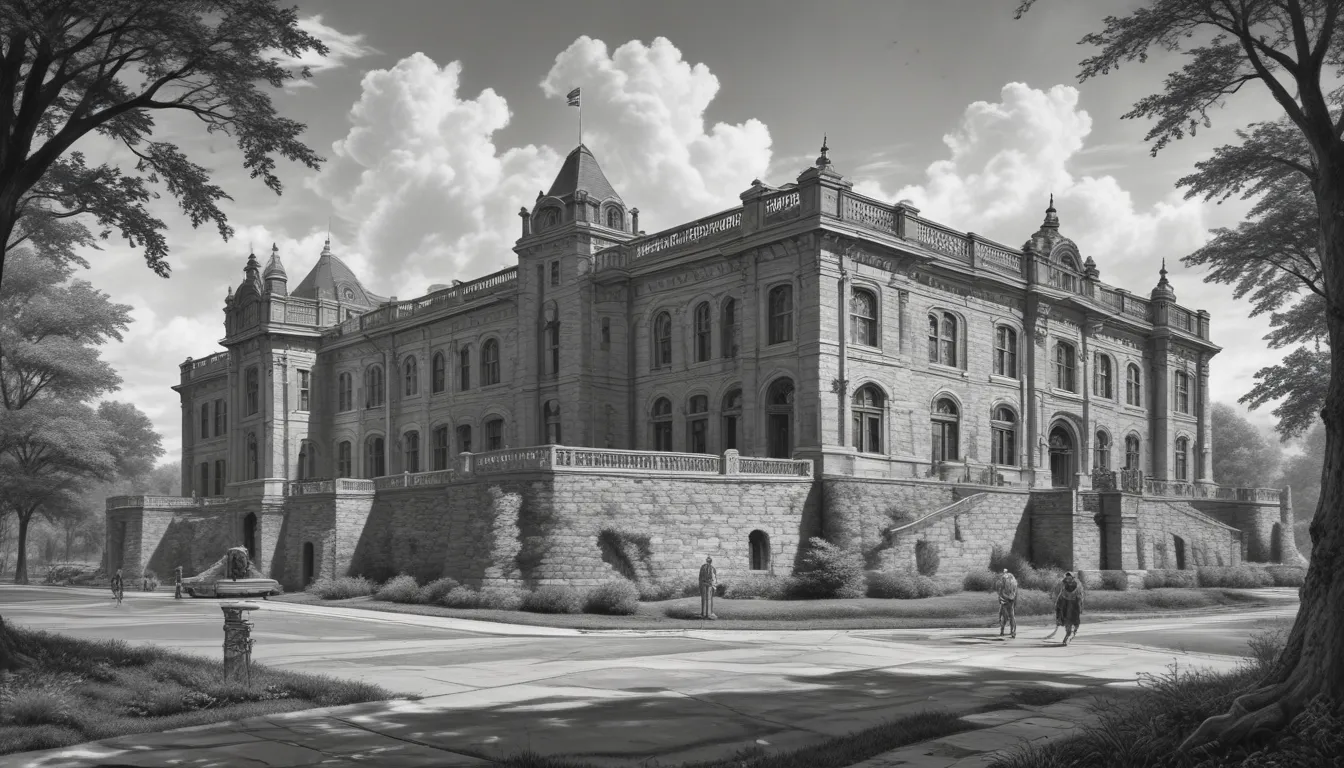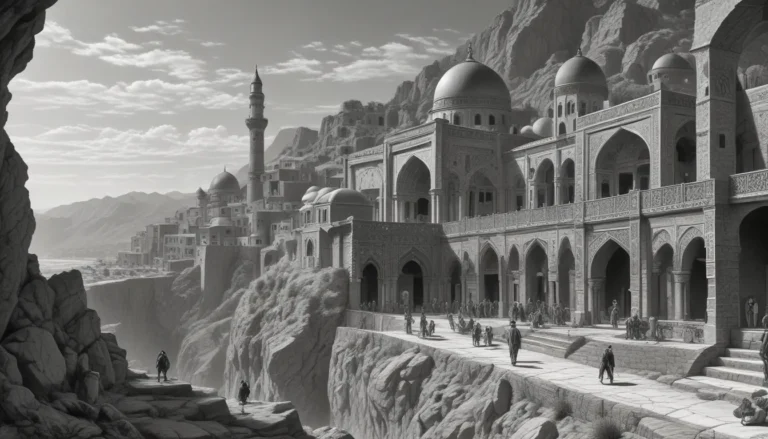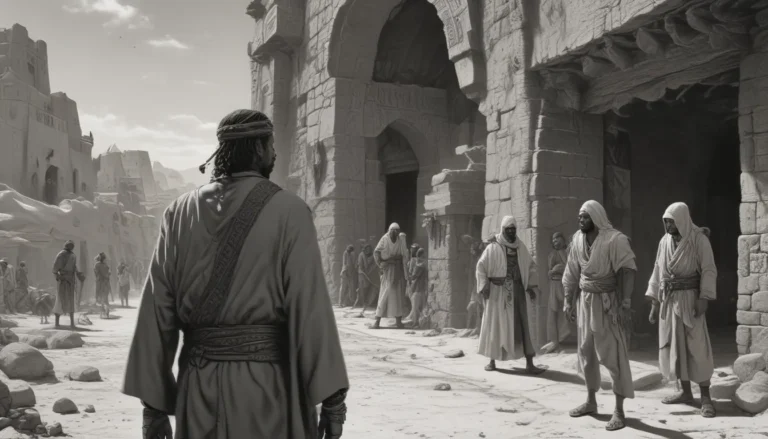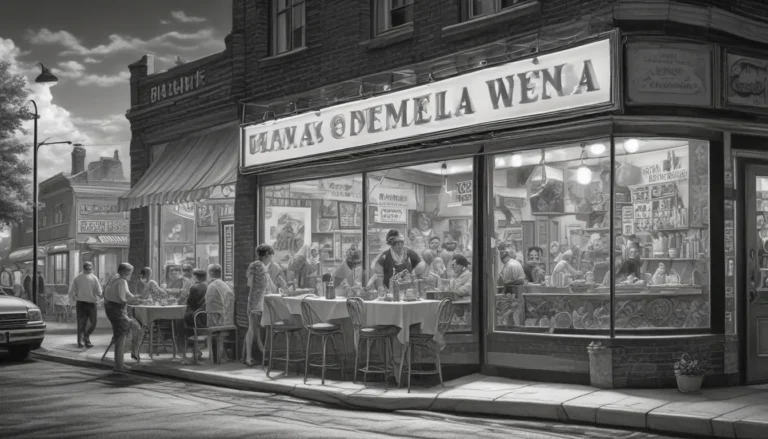The images in our articles are for illustrative purposes only and may not exactly match the content. They are intended to capture your interest and complement the text, not to replace it.
Fort Wayne, Indiana, a city steeped in rich history and culture, beckons visitors to explore its vibrant past through a myriad of historical landmarks. From the iconic Lincoln Tower to the opulent Bass Mansion, each site offers a unique glimpse into the city’s enduring legacy. Join us as we journey through time and uncover the captivating stories woven into the fabric of Fort Wayne’s most renowned sites.
Unveiling Fort Wayne’s Historical Tapestry
Fort Wayne, Indiana, is home to a rich tapestry of historical landmarks, each offering a unique glimpse into the city’s vibrant past. From the opulent Bass Mansion to the iconic Lincoln Tower, visitors can step back in time and immerse themselves in the city’s captivating history.
The city’s historical landmarks, such as The Old Fort and The Cathedral of the Immaculate Conception, provide a fascinating journey through Fort Wayne’s early settlement era and religious heritage. These iconic sites offer a captivating experience, preserving essential chapters of the city’s cultural and historical narrative for future generations to explore and appreciate.
Delve into Fort Wayne’s Historical Landmarks
The History Center
Located in downtown Fort Wayne, Indiana, The History Center offers a glimpse into the region’s rich heritage. Housed in the 1893 City Hall building, this iconic structure itself is a testament to the city’s storied past. Visitors can explore exhibits that showcase the area’s evolution from its early days to the present, providing a comprehensive understanding of Fort Wayne’s historical significance.
The Old Fort
Constructed in 1816, The Old Fort stands as a living testament to Fort Wayne’s early settlement era. This historical landmark offers a captivating experience, allowing visitors to step back in time and immerse themselves in the daily life of early settlers. The site hosts various events and reenactments, offering a vivid portrayal of the challenges and triumphs faced by the city’s early inhabitants.
The Lincoln Tower
The Lincoln Tower, a prominent fixture in Fort Wayne’s skyline, holds a significant place in the city’s history. Completed in 1930, this historic landmark served as a symbol of the city’s growth and prosperity. Today, it stands as a reminder of Fort Wayne’s architectural and historical legacy, attracting visitors and locals alike to admire its timeless grandeur.
The Embassy Theatre
The Embassy Theatre, a cherished historical landmark in Fort Wayne, Indiana, has been an integral part of the city’s cultural tapestry since its opening. With its opulent decor and rich history, the theater continues to host a diverse array of performances, captivating audiences and preserving the city’s vibrant arts scene.
The Fort Wayne Railroad Bridge
The Fort Wayne Railroad Bridge, a historic structure spanning the St. Marys River, stands as a testament to the city’s industrial heritage. Built in 1902, this landmark played a pivotal role in facilitating the region’s transportation and trade, contributing to the city’s economic growth. Today, it remains an enduring symbol of Fort Wayne’s industrial prowess and ingenuity.
The Bass Mansion
The Bass Mansion, an architectural gem nestled in the heart of Fort Wayne, Indiana, exudes timeless elegance and historical significance. Constructed in 1903, this opulent estate stands as a living testament to the city’s affluent past, offering visitors a glimpse into the grandeur and opulence of a bygone era.
The Cathedral of the Immaculate Conception
The Cathedral of the Immaculate Conception, a revered historical landmark in Fort Wayne, Indiana, stands as a testament to the city’s rich religious heritage. With its awe-inspiring architecture and spiritual significance, the cathedral has been a cornerstone of the community since its construction in 1860, serving as a place of worship, reflection, and historical reverence.
The Allen County Courthouse
The Allen County Courthouse, a majestic architectural marvel, stands as a pivotal historical landmark in Fort Wayne, Indiana. Built in 1902, this iconic structure exudes timeless grandeur and serves as a symbol of justice and civic pride. Its imposing presence and rich history make it a must-visit destination for history enthusiasts and architectural aficionados.
The John H. Bass Mansion
The John H. Bass Mansion, an exquisite historical landmark in Fort Wayne, Indiana, offers a captivating glimpse into the city’s affluent past. With its ornate architecture and lavish interiors, the mansion stands as a testament to the opulence and grandeur of a bygone era, providing visitors with a fascinating journey through Fort Wayne’s storied history.
The Fort Wayne Museum of Art
The Fort Wayne Museum of Art, a cultural treasure nestled in the heart of the city, stands as a testament to Fort Wayne’s vibrant arts community. With its diverse collection of contemporary and traditional artworks, the museum enriches the cultural landscape of the city, offering visitors a profound appreciation of artistic expression and creativity.
The Allen County War Memorial Coliseum
The Allen County War Memorial Coliseum, a revered historical landmark in Fort Wayne, Indiana, has been an iconic venue for a wide array of events since its opening. From sporting events to concerts and exhibitions, the coliseum has played a pivotal role in shaping the city’s cultural and entertainment scene, leaving an indelible mark on Fort Wayne’s collective memory.
The Chief Jean-Baptiste de Richardville House
The Chief Jean-Baptiste de Richardville House, a historic gem nestled in Fort Wayne, Indiana, stands as a tribute to the city’s Native American heritage. Constructed in 1827, this landmark offers a fascinating glimpse into the life and legacy of the Miami tribe’s influential leader, preserving an essential part of Fort Wayne’s cultural and historical narrative.
The Allen County Public Library
The Allen County Public Library, a cornerstone of knowledge and learning in Fort Wayne, Indiana, holds a significant place in the city’s historical and cultural landscape. With its rich collection of literary works and resources, the library serves as a vital hub for education, enlightenment, and community engagement, embodying the spirit of intellectual enrichment that defines Fort Wayne’s heritage.
The Botanical Conservatory
The Botanical Conservatory, a verdant oasis in the heart of Fort Wayne, Indiana, stands as a testament to the city’s commitment to preserving natural beauty and biodiversity. With its diverse array of plant species and immersive exhibits, the conservatory offers visitors a tranquil retreat, fostering an appreciation for horticulture and environmental conservation within the heart of the city.
Explore Fort Wayne’s Living Monuments
Fort Wayne, Indiana, is a city steeped in history, boasting a rich tapestry of historical landmarks that offer a glimpse into its past. From the iconic Fort Wayne Old City Hall to the awe-inspiring Embassy Theatre, these landmarks serve as testaments to the city’s enduring heritage. Visitors can immerse themselves in the captivating stories and architectural marvels that define Fort Wayne’s historical landscape. Whether exploring the Fort Wayne History Center or admiring the grandeur of the Allen County Courthouse, there is no shortage of captivating experiences awaiting history enthusiasts. The historical landmarks in Fort Wayne, Indiana, stand as living monuments to the city’s past, inviting visitors to step back in time and appreciate the unique heritage that has shaped this vibrant community.
Frequently Asked Questions
What is the oldest historical landmark in Fort Wayne, Indiana?
The Old Fort, a replica of the original 1815 fort, stands as the oldest historical landmark in Fort Wayne, offering a fascinating glimpse into the city’s early history.
Are there guided tours available for exploring Fort Wayne’s historical landmarks?
Yes, visitors can partake in guided tours to delve into the rich history of Fort Wayne, with knowledgeable guides providing insights into the significance of each landmark.
Can I visit the historical landmarks free of charge?
Many of the historical landmarks in Fort Wayne offer free admission, allowing visitors to explore and appreciate the city’s history without incurring entrance fees.
Are the historical landmarks accessible to individuals with disabilities?
Efforts have been made to ensure that the historical landmarks are accessible to all, with accommodations in place to cater to the needs of individuals with disabilities.
As you embark on your journey through Fort Wayne’s historical landscape, trust in our commitment to delivering accurate and engaging content that enriches your exploration of this vibrant city. Explore, discover, and immerse yourself in the captivating history of Fort Wayne, Indiana.






